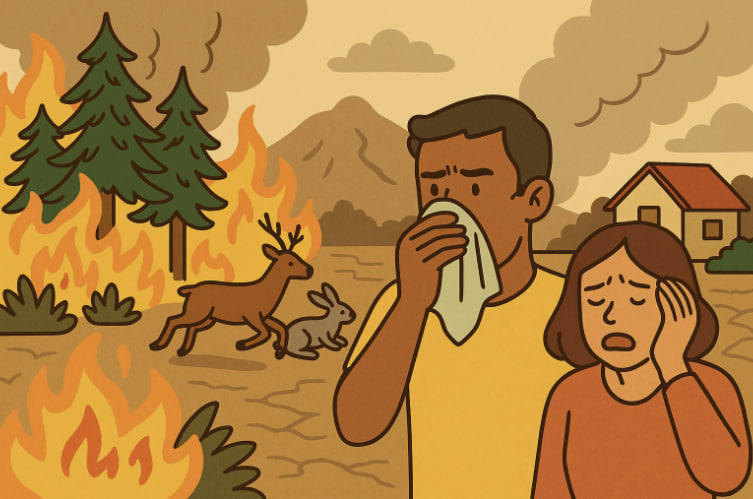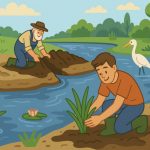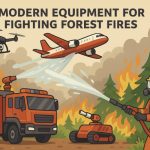Forest fires — whether sparked by lightning, human negligence, or extreme heat — are becoming more frequent and intense around the globe. These fires can spread rapidly, destroying ecosystems, threatening lives, and releasing massive amounts of greenhouse gases. Understanding how forest fires start and what consequences they bring is critical for developing better strategies for prevention, mitigation, and recovery.
What Causes Forest Fires?
Forest fires, also known as wildfires, occur when vegetation ignites and flames spread uncontrollably through natural areas. Common causes include:
- Lightning strikes during storms
- Human activities (campfires, discarded cigarettes, power lines)
- Arson
- Droughts and heatwaves, worsened by climate change
- Wind that accelerates flame spread and direction
In many regions, the combination of dry seasons, high temperatures, and flammable materials creates a “fire-prone” environment.
Immediate Consequences of Forest Fires
1. Destruction of Biodiversity
- Thousands of plants and animals may be killed or displaced
- Rare and endangered species can lose their natural habitat
- Fires disrupt ecosystems and food chains
2. Loss of Human Life and Property
- Homes and communities in fire-prone zones may be burned to the ground
- Firefighters and residents are at direct risk
- Entire towns may be evacuated, causing psychological trauma
3. Air Pollution
- Fires release large quantities of carbon dioxide, carbon monoxide, and fine particulate matter (PM2.5)
- Smoke can travel thousands of kilometers, impacting cities and neighboring countries
- Inhalation of wildfire smoke can trigger asthma, heart attacks, and respiratory illness
4. Soil and Water Damage
- Fires destroy topsoil and lead to erosion
- Ash and burned material can contaminate rivers and lakes, affecting drinking water and aquatic life
- Loss of vegetation makes landscapes vulnerable to flooding and landslides
Long-Term Environmental Effects
- Global warming: Forests are carbon sinks, but burning them releases greenhouse gases and worsens climate change
- Ecosystem collapse: Repeated fires can permanently alter landscapes, turning forests into grasslands or deserts
- Loss of pollinators: Fires reduce plant diversity and harm bees, butterflies, and birds critical for reproduction
Socioeconomic Impacts
- Economic damage from destroyed crops, timber, tourism, and infrastructure
- Insurance losses and rising costs of wildfire management
- Displacement of communities and long-term health costs
- Reduced food and water security in affected areas
Can Forest Fires Ever Be Beneficial?
In some ecosystems, occasional fire is natural and necessary. It can:
- Clear dead material, promoting new growth
- Release nutrients into the soil
- Help some plants (like pine trees) release seeds
However, climate-driven mega-fires exceed natural thresholds, causing more harm than benefit.
What Can Be Done?
Prevention
- Controlled burns to remove excess vegetation
- Firebreaks and buffer zones
- Educating communities about fire safety
- Improving land-use planning in wildfire zones
Response
- Rapid detection systems (satellites, drones)
- Trained fire crews and evacuation protocols
- International cooperation during major wildfire crises
Recovery
- Reforestation and soil restoration
- Mental health support for affected populations
- Strengthening disaster resilience policies
Conclusion
Forest fires are not just environmental disasters — they are also health, climate, and humanitarian crises. With climate change increasing their frequency and intensity, urgent action is needed to prevent, contain, and recover from wildfires. Protecting forests means protecting biodiversity, the climate, and human life.
Glossary
- Wildfire – an uncontrolled fire occurring in forests, grasslands, or bush.
- PM2.5 – fine particulate matter in smoke that poses serious health risks when inhaled.
- Carbon sink – natural systems (like forests) that absorb more carbon than they release.
- Ecosystem – a community of organisms interacting with their environment.
- Firebreak – a gap in vegetation designed to stop or slow the spread of fire.


